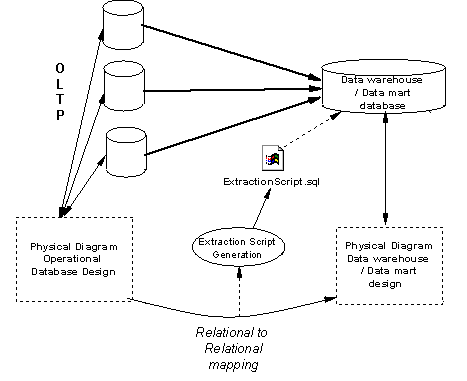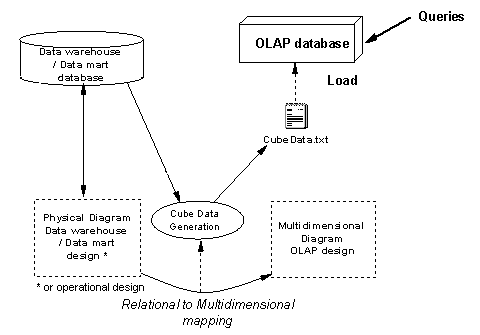Data warehousing requires the extraction, transformation, and loading of data from operational systems to a data warehouse database. You can create mappings between operational and data warehouse data and from the data warehouse data and OLAP cubes.
You can model operational and data warehouse data structures in PDMs, and specify mappings between the operational data sources and the data warehouse to generate extraction scripts to populate the data warehouse with operational data.
In this kind of relational-to-relational mapping, operational tables are mapped to data warehouse tables with a type of fact or dimension, and operational columns are mapped to warehouse columns.
You can map physical tables (including those of type dimension or fact) to cube dimensions or cube measures in OLAP databases, and use these mappings to generate cube data in text files to be loaded by OLAP engines. When you use the Rebuild Cubes command to create cubes and dimensions from fact and dimension tables, mappings between source tables and OLAP objects are automatically created.
Once the source tables or views are identified, you can define mappings between attributes or measures and table columns.
The Select sub-tab displays the entire SQL statement used to select data in the data source. This statement is automatically generated. The Generate Cube Data feature uses this SQL statement to fill the text files used to populate cubes in an OLAP database.

